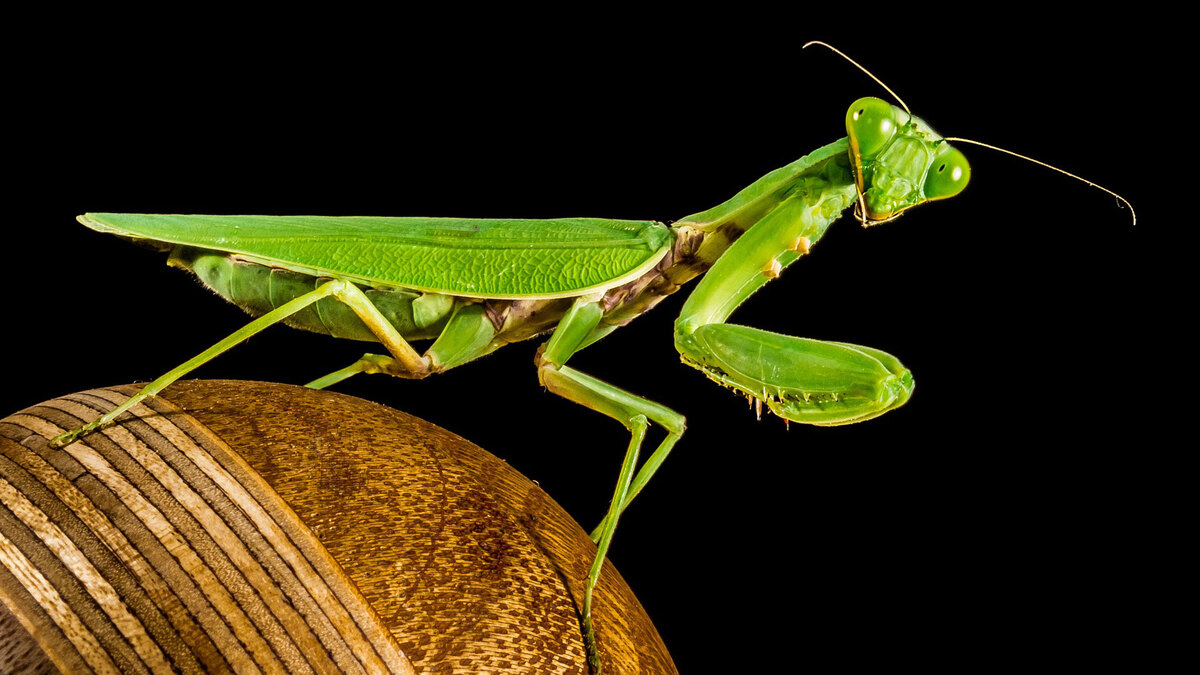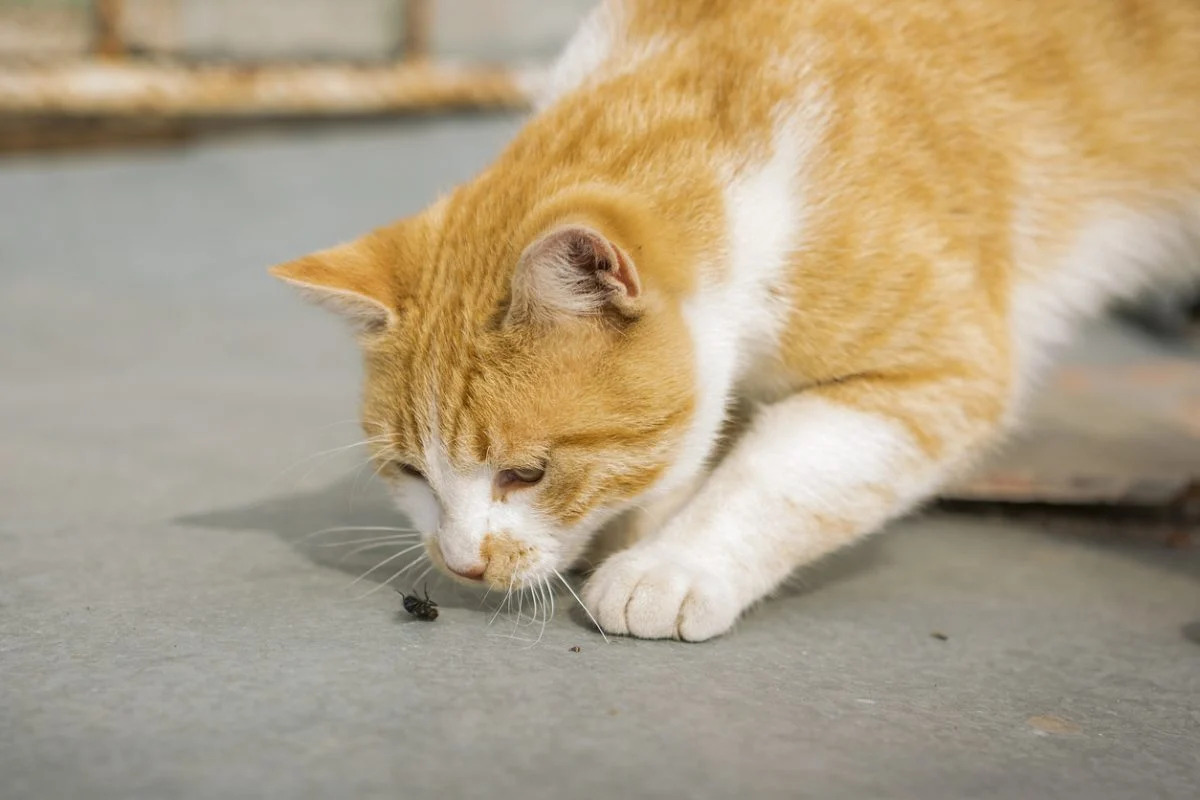Home>Gardening News and Trends>Latest News>Why Do Insects Not Die From Falling


Latest News
Why Do Insects Not Die From Falling
Modified: January 22, 2024
Discover the latest news on why insects are able to survive falls without harm. Explore the fascinating mechanisms that protect them from injuries and find out the secrets of their resilience.
(Many of the links in this article redirect to a specific reviewed product. Your purchase of these products through affiliate links helps to generate commission for Chicagolandgardening.com, at no extra cost. Learn more)
Table of Contents
Introduction
Have you ever wondered how insects manage to survive falls from great heights without getting injured? It’s a fascinating question that piques the curiosity of many people. While falling from significant heights would be fatal for humans and larger animals, insects seem to defy gravity and come out unscathed. So, what enables these tiny creatures to survive such falls?
To understand why insects have this remarkable ability, we need to delve into the physics of falling and examine the unique characteristics of these miniature beings. While insects may seem small and fragile, they possess various adaptations that allow them to navigate their environment with agility and resilience.
In this article, we will explore the factors that contribute to insects’ ability to survive falls. We will discuss their exoskeletons, flight adaptations, small size and surface area, terminal velocity and air resistance, their ability to right themselves mid-air, and the special adaptations they employ for landing.
Now, let’s dive into the fascinating world of insects and uncover the secrets behind their remarkable ability to safely endure falls from great heights.
The Physics of Falling
Before we explore the specific adaptations that allow insects to survive falls, let’s first understand the basic physics behind falling objects. When any object, including insects, falls, it experiences two main forces: gravity and air resistance.
Gravity is the force that pulls objects towards the Earth’s center. It causes objects to accelerate as they fall, gaining speed with each passing moment. On the other hand, air resistance, also known as drag, is a force that opposes the motion of an object through the air.
For larger objects like humans, the force of gravity is much stronger, and the impact of falling from a height can be fatal. However, insects have several factors working in their favor that minimize the potential damage.
One of the key factors is their lightweight and compact bodies. Insects have a exoskeleton made of a tough, lightweight material called chitin. This exoskeleton protects the delicate internal organs and provides structural support. Additionally, the exoskeleton’s rigidity helps reduce the impact forces during a fall.
Furthermore, insects have evolved flight adaptations that enable them to maneuver through the air with precision and control. These adaptations include wings, complex wing movements, and specialized muscles. By utilizing their flight abilities, insects can mitigate the effects of falling and adjust their body position to land more safely.
Now that we have a basic understanding of the physics involved, let’s explore how the specific characteristics and adaptations of insects play a role in their ability to survive falls.
Insects’ Exoskeletons
One of the key factors that contribute to insects’ ability to survive falls is their exoskeleton. Unlike humans and other vertebrates, insects have an external skeleton made of a tough, lightweight material called chitin.
The exoskeleton provides several advantages when it comes to withstanding falls. First, it serves as a protective armor, shielding the delicate internal organs from impact. The sturdy exoskeleton helps to distribute the force of the impact over a larger area, reducing the risk of injury.
Moreover, the exoskeleton’s rigidity and flexibility allow it to absorb and dissipate energy during a fall. When an insect hits the ground, the exoskeleton acts as a shock absorber, absorbing some of the impact forces and preventing them from reaching the fragile internal structures.
Another advantage of the exoskeleton is that it provides structural support. The exoskeleton not only protects the insect’s body but also helps maintain its shape during falls. This structural integrity helps minimize damage and maintain the insect’s ability to move and function even after a fall.
Additionally, the lightweight nature of the exoskeleton contributes to the insect’s ability to withstand falls from great heights. Unlike heavier animals, insects have a lower mass-to-surface area ratio, meaning they experience less air resistance as they fall. This reduced air resistance allows them to fall more freely and further minimizes the impact forces they experience upon landing.
Overall, the exoskeleton is a crucial adaptation that allows insects to survive falls. Its protective, shock-absorbing, and structural properties provide them with the necessary resilience to endure falls that would be catastrophic for larger and more delicate creatures.
Flight Adaptations
Insects are unique among animals for their ability to fly, and this adaptation plays a significant role in their survival during falls. Flight provides insects with the agility and maneuverability to adjust their body position and mitigate the impact forces of a fall.
One of the key flight adaptations seen in insects is the presence of wings. Most insects have two pairs of wings, which they can move independently and with great dexterity. By flapping their wings, insects generate lift, allowing them to stay airborne and control their descent when falling.
These complex wing movements also enable insects to change their direction and orientation in mid-air. When insects fall, they can adjust their wing movements to slow down or change their trajectory, which helps them to steer away from potentially dangerous obstacles or land in a more favorable location.
In addition to wings, insects have specialized muscles that allow for precise and rapid movements. These muscles provide insects with the ability to make quick adjustments in flight, such as stabilizing their body position or executing complex aerial maneuvers. These rapid adjustments can help insects to regain control and minimize the impact forces upon landing.
Furthermore, the small size of insects enhances their flight adaptations. Their lightweight bodies and relatively large wings in proportion to their size provide a high power-to-weight ratio. This allows insects to generate enough lift to counteract the force of gravity, giving them more control over their descent and reducing the impact forces upon landing.
Overall, the flight adaptations of insects, including the presence of wings, specialized muscles, and their small size, enable them to navigate the air with precision and adjust their body position to land more safely when falling.
Small Size and Surface Area
The small size of insects is another important factor that contributes to their ability to survive falls. Insects have evolved to be incredibly compact, and this compactness plays a role in minimizing the impact forces they experience upon landing.
One advantage of being small is that insects have a lower mass-to-surface area ratio compared to larger animals. This means that, in relation to their weight, insects have a relatively larger surface area exposed to the air as they fall. This increased surface area results in a higher air resistance, which helps to slow down their descent and reduce the force with which they hit the ground.
The higher air resistance experienced by insects is particularly beneficial during falls from great heights. It allows insects to reach a state known as terminal velocity more quickly, which is when the force of gravity is balanced by the resistance of the air. Terminal velocity prevents the insect from accelerating further and experiencing excessively strong impact forces upon landing.
Additionally, the small size of insects enables them to take advantage of the wind currents. They can be carried by the air currents and have more control over their descent. This allows them to navigate and land in safer locations, away from potential hazards or areas with a higher risk of injury.
Moreover, the compact size of insects allows them to fit into small spaces or maneuver through narrow openings when they encounter obstacles during a fall. This agility helps them to change their trajectory and land in a more controlled manner.
In summary, the small size of insects, along with the increased surface area and higher air resistance they experience, contributes to their ability to reach terminal velocity quickly and reduce the impact forces upon landing. The compactness also allows them to navigate through air currents and fit into tight spaces, enhancing their overall survival during falls.
Terminal Velocity and Air Resistance
Terminal velocity and air resistance play significant roles in the survival of insects during falls. Terminal velocity is the maximum speed an object can reach while falling, when the force of gravity is balanced by the resistance of the air. Let’s explore how these factors contribute to the ability of insects to withstand falls.
As insects fall through the air, they initially accelerate due to gravity. However, as their speed increases, the air resistance acting against them also increases. Eventually, a point is reached where the force of air resistance becomes equal to the force of gravity, resulting in a net force of zero. This causes the insect to reach a state of equilibrium, known as terminal velocity, where the downward acceleration stops.
The compact size and lightweight nature of insects allow them to quickly reach terminal velocity. Their relatively large surface area, in proportion to their weight, leads to a higher air resistance. This increased air resistance opposes the force of gravity and helps slow down their descent. Consequently, insects experience less force upon impact and have a higher chance of surviving falls from significant heights.
It’s important to note that the terminal velocity of insects differs depending on their size, shape, and body position during the fall. Insects with larger surfaces, such as beetles or dragonflies, have lower terminal velocities compared to insects with smaller surface areas, like ants or flies. Furthermore, insects are capable of adjusting their body positions during falls, which can further impact their terminal velocity.
The ability to reach terminal velocity quickly is advantageous for insects, as it allows them to stabilize their descent and reduce the impact forces upon landing. By minimizing the speed at which they hit the ground, insects reduce the risk of injury and increase their chances of survival.
Overall, the concept of terminal velocity and the role of air resistance are crucial in understanding why insects are capable of enduring falls. By utilizing these principles, insects are able to navigate through the air with precision and land safely, even when falling from considerable heights.
Insects’ Ability to Right Themselves
In addition to their other remarkable adaptations, insects possess an incredible ability to right themselves mid-air during a fall. This means that if they initially fall in an undesirable position, such as upside-down or with their wings folded, they have the capacity to adjust their body position and land on their feet or in a more favorable orientation.
This impressive feat is primarily attributed to the sensory organs and reflexes that insects have developed. Insects possess specialized organs called proprioceptors, which allow them to perceive their body position and orientation in space. These proprioceptors provide insects with the necessary information to perform rapid and precise adjustments while falling.
When an insect detects that it is in an unfavorable position, the appropriate sensory feedback triggers reflexes that engage the necessary muscles to reposition the body. For example, if an insect falls upside-down, it may execute a series of twisting or flipping movements to reorient itself upright before landing.
In addition to proprioception, insects rely on sensory inputs such as visual cues and gravity receptors to aid in their righting response. By utilizing these senses and integrating the information received, they can make split-second decisions and perform the appropriate actions to correct their position.
This ability to right themselves not only helps insects land in a safer and more stable manner but also allows them to quickly recover and resume normal locomotion after a fall. By minimizing the time spent in a vulnerable position, insects can reduce the risk of being preyed upon or sustaining injuries.
It’s important to note that the righting ability of insects can vary depending on the species and their specific adaptations. Some insects may have more advanced reflexes and sensory mechanisms, allowing for a faster and more efficient righting response. Others may have specialized appendages or body structures that aid in landing and reorienting themselves.
The ability to adjust their body position mid-air showcases the remarkable agility and adaptability of insects. This skill further contributes to their survival during falls, ensuring their chances of landing safely and continuing their activities without significant disruption.
Special Adaptations for Landing
Insects have evolved various special adaptations to enhance their ability to land safely after a fall. These adaptations help them minimize the impact forces and ensure a smooth and controlled landing.
One important adaptation is the presence of specialized structures or appendages that act as shock absorbers. For example, some insects have modified legs or foot pads that are designed to cushion the impact upon landing. These structures may have an elastic or spongy nature, which helps absorb and distribute the force of the landing, reducing the risk of injury.
Furthermore, certain insects have evolved appendages that serve as parachutes or airfoils. These structures, such as fringed wings or enlarged hind legs, increase the surface area and create additional air resistance during the descent. This increased air resistance acts as a braking mechanism, allowing insects to slow down their fall and land with less force.
Some insects have developed specialized behaviors or techniques to assist in their landing process. For instance, certain butterflies and moths perform a maneuver called “fluttering” as they approach the ground. By rapidly flapping their wings, they create turbulence that aids in reducing their speed and controlling their descent. Similarly, some insects perform spiraling or helical motions, which help to stabilize their body and control their rate of descent.
Additionally, innate reflexes and instincts play a crucial role in insects’ ability to land safely. Insects possess built-in motor programs that are activated upon descent to facilitate a controlled landing. These motor programs include specific wing and leg movements that ensure a smooth touchdown, minimizing the impact on their body.
It’s worth noting that the specific adaptations for landing can vary among different insect species. The adaptations are tailored to the unique requirements of each species and are honed through the process of natural selection over time.
By having these special adaptations, insects are better equipped to handle the physical forces associated with landing. They are able to touch down in a controlled manner, thus reducing the risk of injury and ensuring the continuation of their activities.
Conclusion
The ability of insects to survive falls from great heights is nothing short of remarkable. These tiny creatures have adapted in numerous ways to endure the physical forces associated with falling and land safely. From their exoskeletons that provide protection and structural support, to their flight adaptations that allow for precise control and maneuverability, insects have evolved a diverse range of characteristics to navigate their environment with resilience.
The small size and surface area of insects contribute to a higher air resistance, enabling them to reach terminal velocity quickly and reducing the impact forces upon landing. Additionally, their proprioception and sensory systems allow them to right themselves mid-air, ensuring a favorable orientation for landing. Furthermore, specialized adaptations such as shock-absorbing structures, parachutes or airfoils, and specific landing behaviors aid in minimizing the impact of the landing.
By combining these adaptations, insects showcase their incredible agility, adaptability, and survival skills. They can endure falls that would have severe consequences for larger organisms, allowing them to navigate their environments with relative safety and resilience.
The study of insects and their ability to survive falls not only provides insights into their unique biology but also serves as inspiration for human engineering and design. Engineers and scientists can draw upon these adaptations in the development of technologies aimed at enhancing safety and mitigating the impact of falls in various contexts.
In conclusion, the exceptional adaptations of insects allow them to thrive in environments where falling from significant heights is a frequent occurrence. Understanding these adaptations not only enriches our knowledge of the natural world but also provides inspiration for innovation and problem-solving in human endeavors.









